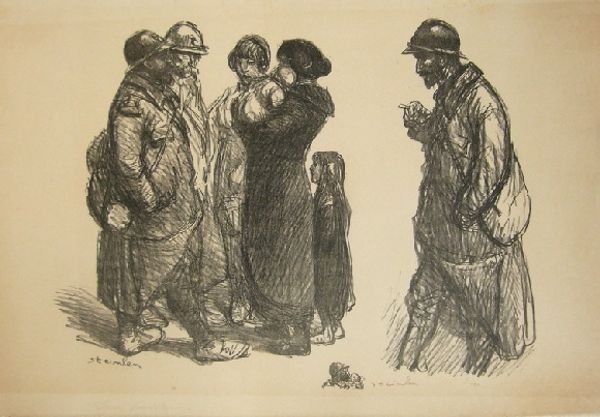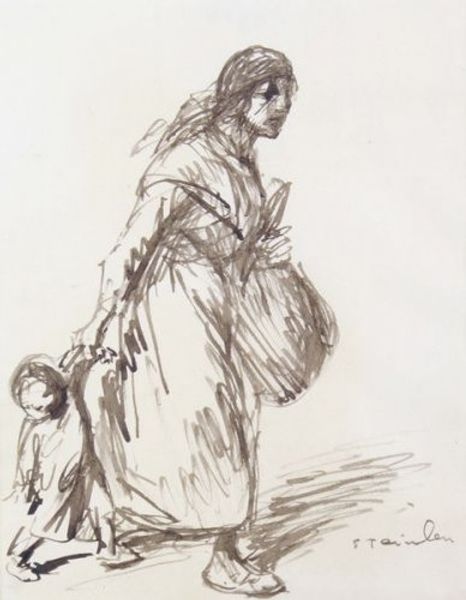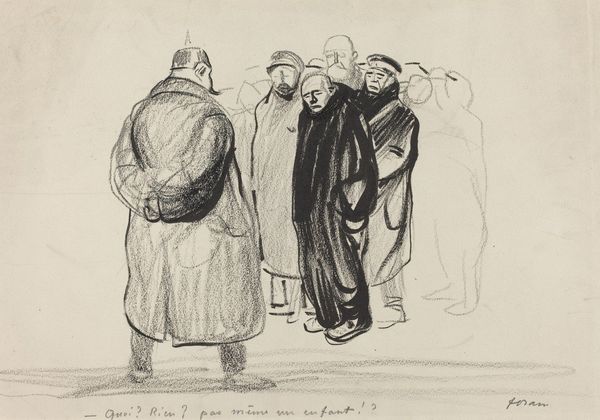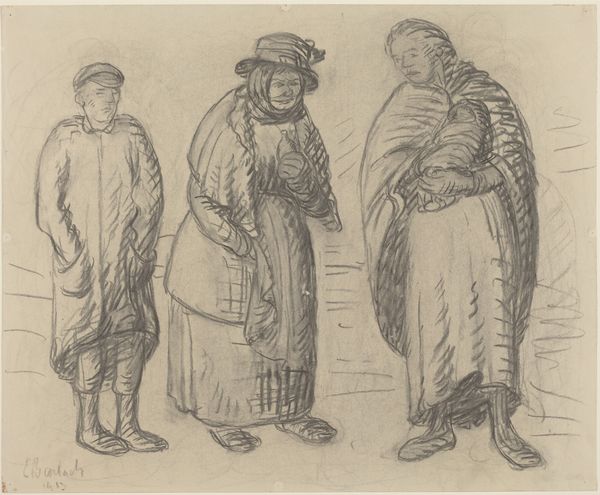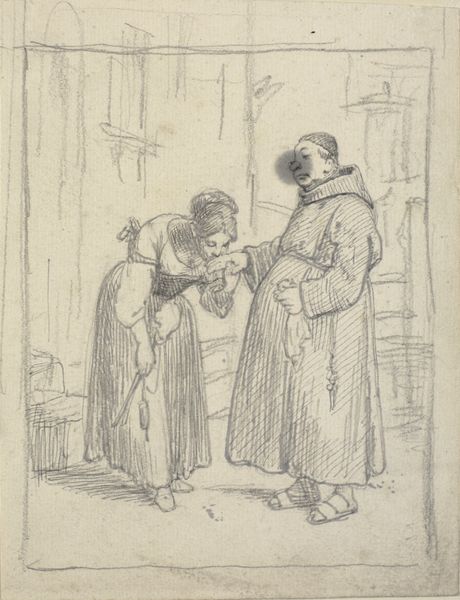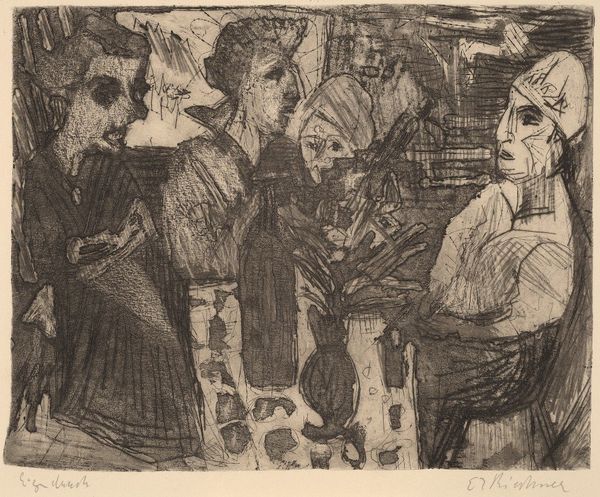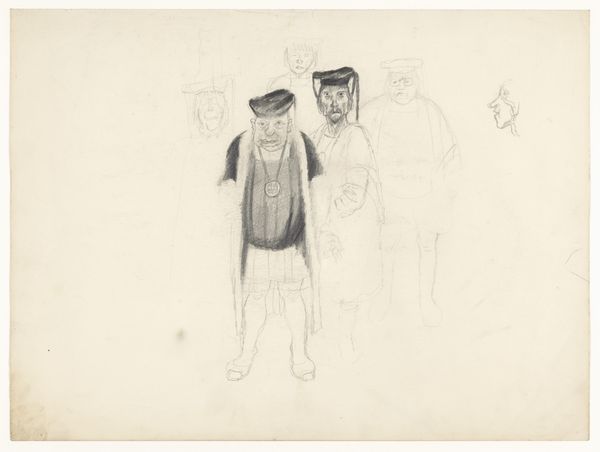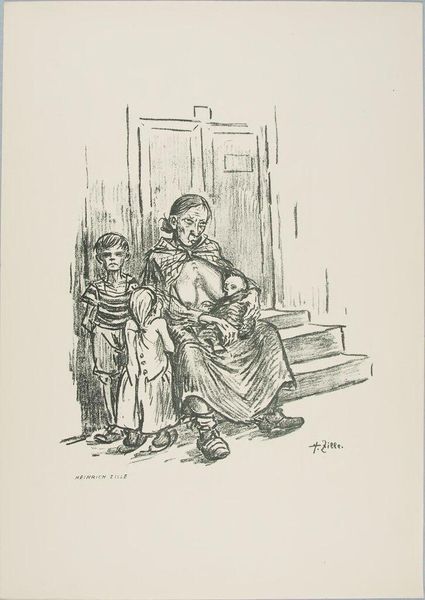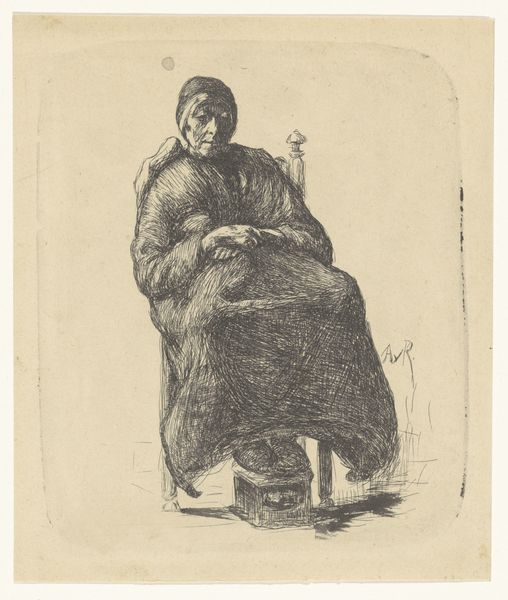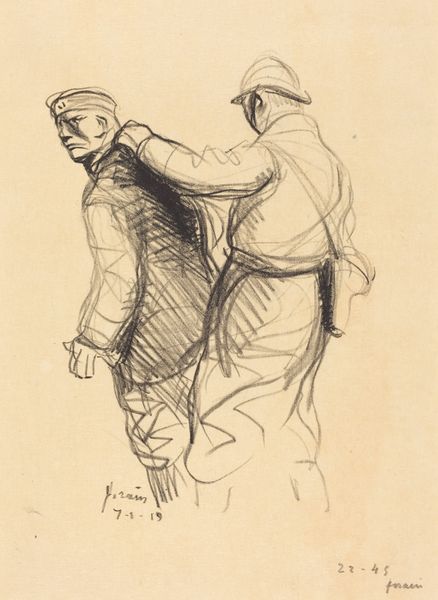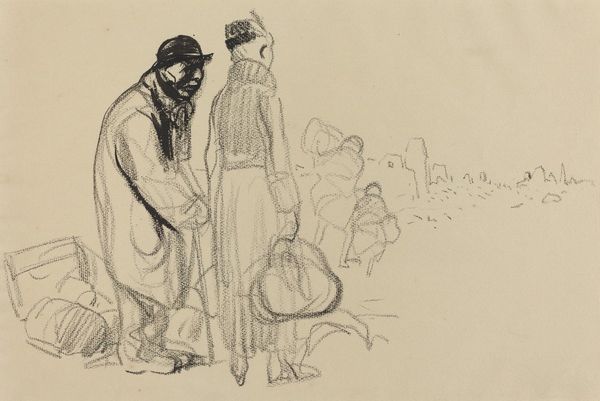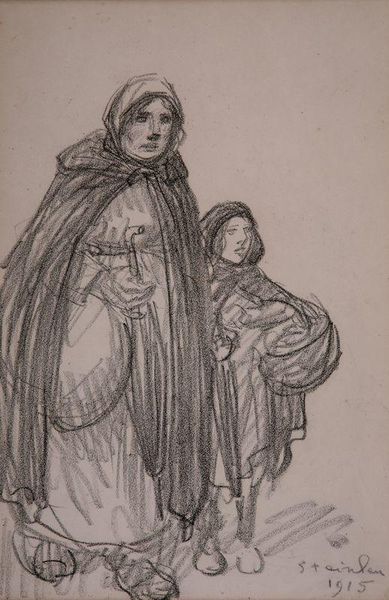
drawing, pencil
#
portrait
#
pencil drawn
#
drawing
#
pencil sketch
#
charcoal drawing
#
figuration
#
pencil drawing
#
pencil
#
academic-art
#
realism
Copyright: Public domain
Editor: Here we have Thèophile Alexandre Steinlen's "Gares" from 1916, rendered in pencil. The sketch feels very immediate and raw, showing these figures with such apparent weariness. What do you see when you look at this piece? Curator: I’m immediately drawn to the materials themselves: pencil on paper. It democratizes the artistic process. This wasn’t about expensive paints or bronze. Steinlen is using a humble medium to depict, ostensibly, working-class people. Notice the rough quality of the lines and shading, the lack of polish. It brings a certain unidealized realism. How might the historical context of 1916 – amidst the throes of World War I – be informing our reading of these figures and their presentation? Editor: It definitely heightens the sense of hardship. The simple materials mirror the subjects' likely economic situation, emphasizing a lack of refinement during wartime. Do you think this reflects the artist’s social or political intentions? Curator: Perhaps. Steinlen frequently depicted working-class life. His choice of materials – the accessibility of pencil and paper – suggests an intention to both represent and perhaps even connect with this demographic. There’s a kind of visual solidarity being enacted through the very means of production, don't you think? Furthermore, consider where the drawing may have appeared: in mass-produced publications, thereby multiplying its social reach. Editor: I hadn’t thought about it that way, but now I see how the artwork itself embodies the values it represents, by breaking from the art world’s expensive standards. Thanks! Curator: Precisely. The materiality directs our understanding toward the means of representation and social context, thus emphasizing the accessibility of the depicted subjects.
Comments
No comments
Be the first to comment and join the conversation on the ultimate creative platform.

